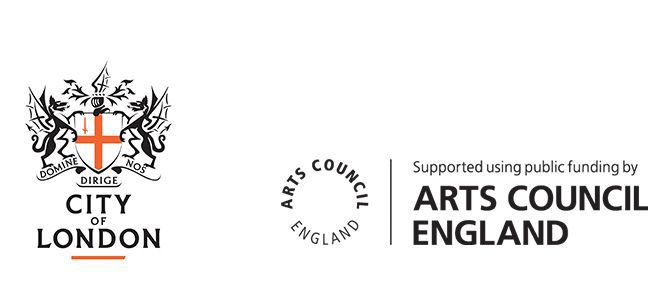BMW Classics
Saturday 13 July 2024
Trafalgar Square & streamed live
Concert starts 5pm BST
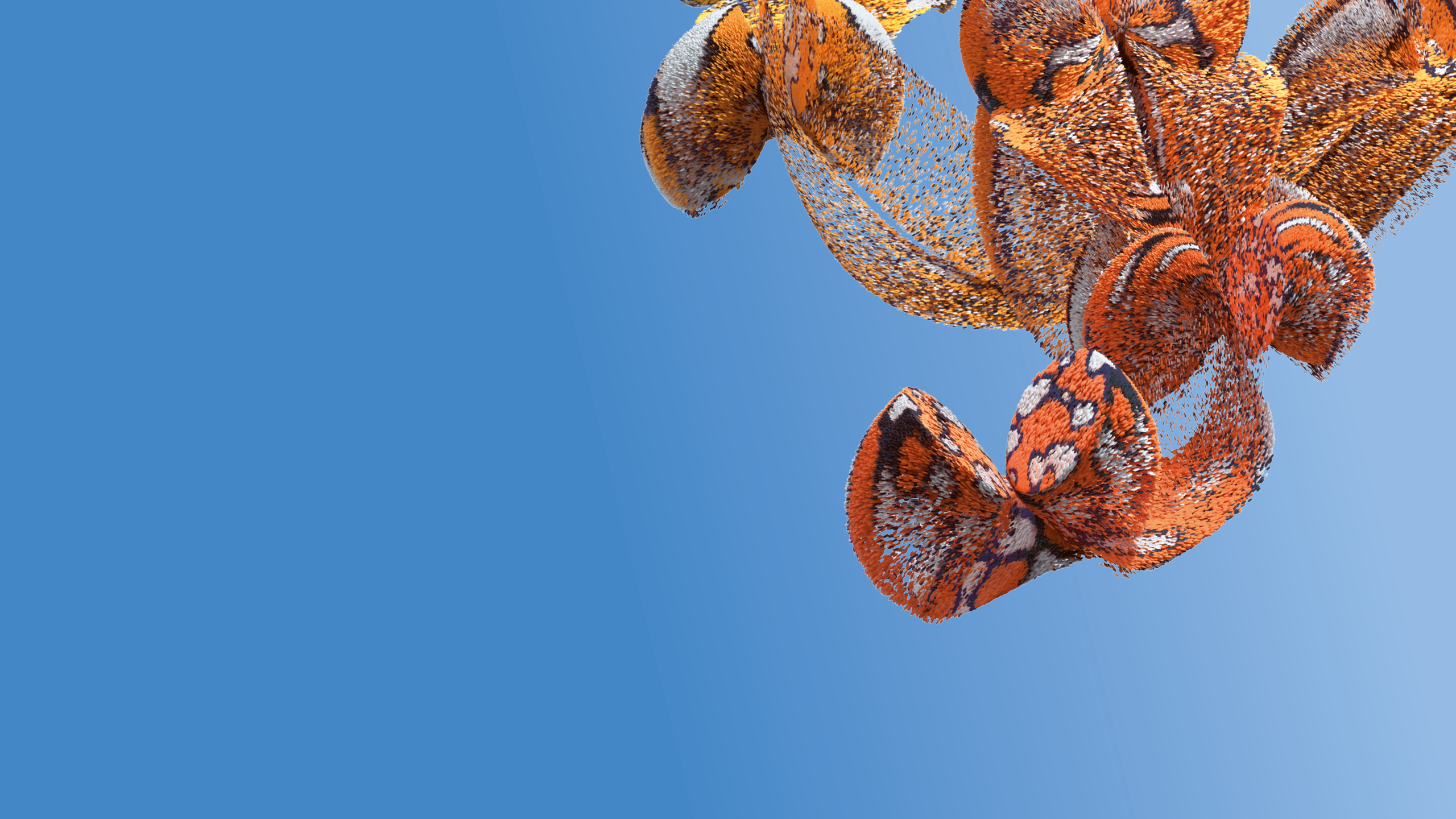
BMW Classics is an annual open-air concert by the London Symphony Orchestra, live in London's iconic Trafalgar Square. You can join us in the Square or watch the live stream on YouTube and Facebook, but wherever you are, the concert is free for everyone to enjoy!
YOUR CONCERT GUIDE
Read all about the music and performers in today's concert in this digital guide. Navigate using the menu or menu icon (≡) at the top of the screen. Click any highlighted text to find out more.
LOOKING FOR SOMETHING ELSE
TELL US WHAT YOU THINK
We'd love to hear your thoughts on this event via a short survey.


With thanks to British Cushions, Coffee on the Green and the Liszt Institute – Hungarian Cultural Centre London.
Welcome
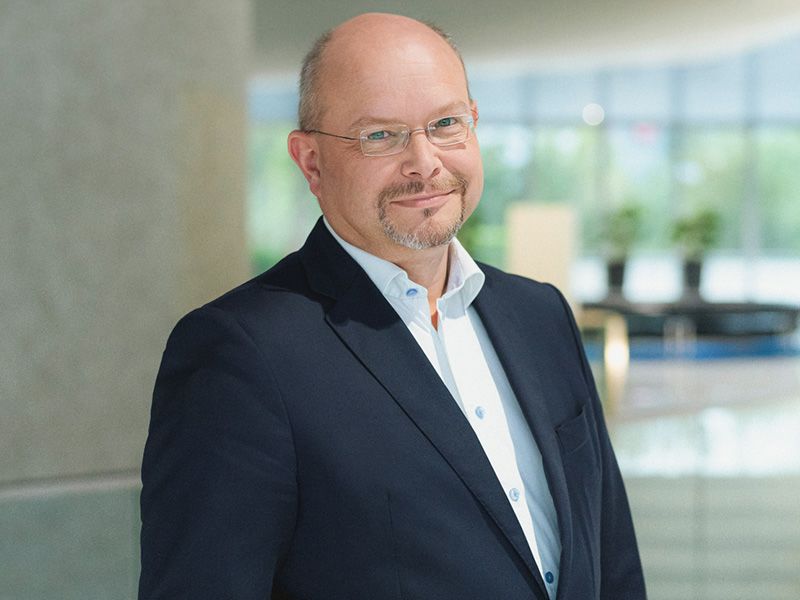
Walter Mertl
There are probably few better open air concert venues than London’s Trafalgar Square. Today BMW Classics will once again offer an outstanding symphonic experience to the city of London, with Duncan Ward conducting the world-class London Symphony Orchestra in the open air.
At the BMW Group, our commitment to great music is an integral part of our global cultural engagement, which has been inspiring people around the world for more than half a century. Intercultural cooperations are part of our everyday practice and the prerequisite for achieving economic success as a global company with employees from over 110 nations worldwide. We are committed to diversity, respect and tolerance.
We’ve been long-term partners with the LSO – united throughout by our steadfast commitment to creative freedom, perfection and emotion. I am pleased to announce the continuation of our partnership for another three years.
I wish everyone a beautiful summer concert. Let the LSO and young musicians from East London and further afield capture your senses in the heart of this mesmerising city, which I was lucky to call my home for several years.

Walter Mertl Member of the Board of Management of BMW AG, Finance
Walter Mertl Member of the Board of Management of BMW AG, Finance
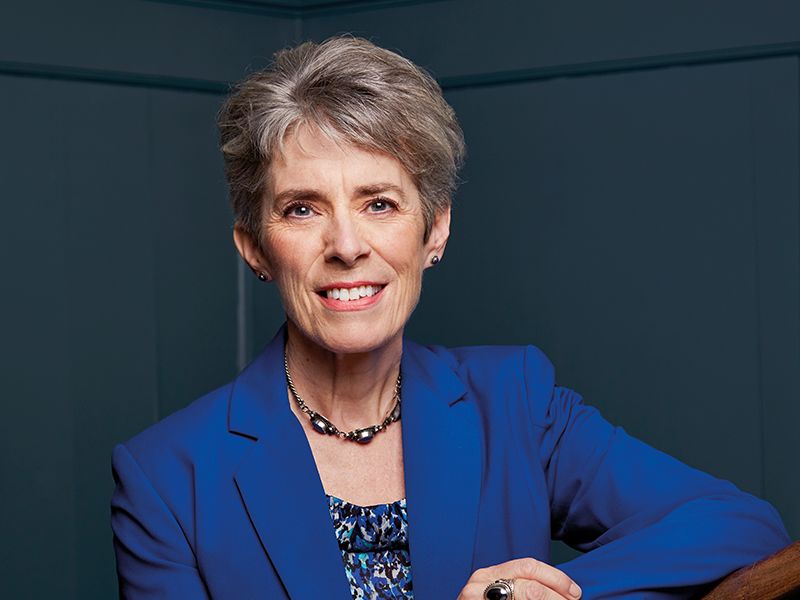
Dame Kathryn McDowell © John Davis
A special welcome to this year’s BMW Classics concert, whether you join us here in Trafalgar Square or are watching online. This concert is the highlight of our year, and we are delighted that it continues to be free for everyone to enjoy.
The LSO has been performing these concerts in Trafalgar Square since 2012, and they have become an important fixture in London’s summer calendar of music events. Over 100,000 people have enjoyed the thrilling performances by the LSO in the Square – many for the very first time – and we have reached hundreds of thousands more worldwide through online streaming. We are deeply grateful to our long-standing Principal Partner, BMW, for their continued support which makes this event possible.
Today’s programme of energetic and colourful orchestral music is conducted by Duncan Ward, with whom the LSO has worked with for 15 years since his student days on the LSO Panufnik Composers Scheme. The concert opens with Emmanuel Chabrier’s exuberant Joyeuse march, which is followed by Johannes Brahms’ Rondo alla zingarese, a rhythmic dance piece that showcases the agility and talent of the Orchestra. As ever in this concert, we also celebrate the next generation of musical talent, as young musicians from LSO Discovery programmes and the Guildhall School of Music & Drama join the Orchestra to give the world premiere of beams.bellows.bounds by Joanna Lee, another past member of the LSO Panufnik Composers Scheme. Igor Stravinsky’s magical ballet Petrushka follows the trials and tribulations of a puppet and gives an explosive end to the concert.
The LSO is extremely grateful to BMW, and to all those who have made this event possible, in particular to Sadiq Khan, the Mayor of London, for the opportunity to perform in this fantastic location, and to our streaming partner, YouTube for enabling us to reach audiences worldwide.
I hope you enjoy the performance.

Dame Kathryn McDowell DBE DL Managing Director, London Symphony Orchestra
Dame Kathryn McDowell DBE DL Managing Director, London Symphony Orchestra
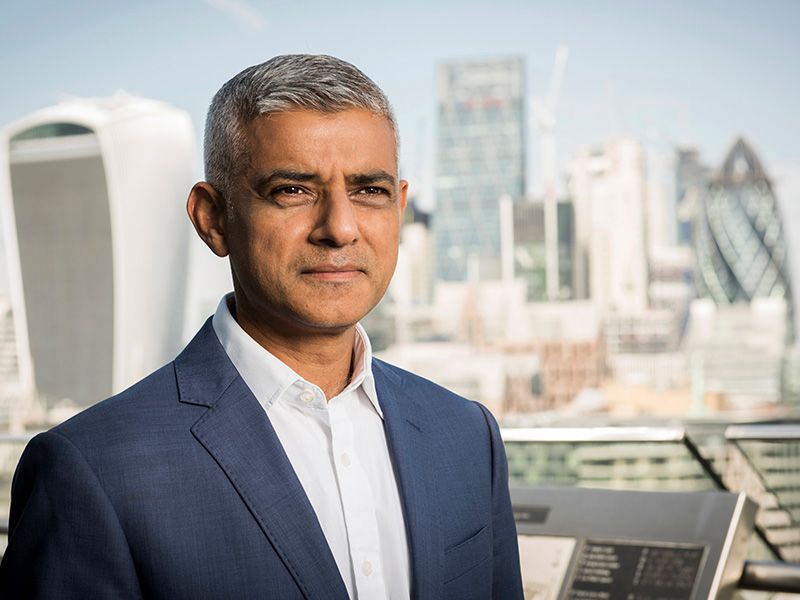
Sadiq Khan © Greater London Authority
Welcome to London, the greatest city in the world! Music is one of the main reasons visitors flock to the capital. Whether it’s to see Taylor Swift at Wembley, visit one of our grassroots music venues to discover the next number one artist, or hear the world-renowned London Symphony Orchestra performing on Trafalgar Square, we have something for everyone!
I’m proud to support the London Symphony Orchestra and the BMW Classics concerts, which are a firm favourite in London’s cultural calendar.
They’re a chance to experience some of the world’s finest music for free in the heart of our capital. They also shine a light on the next generation of talent, with 50 young musicians joining the Orchestra on stage to give the premiere performance of Joanna Lee’s beams.bellows.bounds.
Whether you’re joining in person or online, I hope you enjoy today’s concert.

Sadiq Khan Mayor of London
Sadiq Khan Mayor of London

Walter Mertl
Walter Mertl

Dame Kathryn McDowell © John Davis
Dame Kathryn McDowell © John Davis

Sadiq Khan © Greater London Authority
Sadiq Khan © Greater London Authority
Today's Programme & Performers
Emmanuel Chabrier Joyeuse marche
Johannes Brahms orch Arnold Schoenberg Rondo alla zingarese
Joanna Lee beams.bellows.bounds (world premiere) *
Igor Stravinsky Petrushka (1947 version)
Duncan Ward conductor
LSO Discovery Young Musicians *
Guildhall School Musicians *
London Symphony Orchestra
Programme notes & composer profiles by Sarah Breeden
Emmanuel Chabrier
Joyeuse marche
✒️ 1888 | ⏰ 4 minutes
Today’s concert begins with a gloriously tasty French bonbon. With a sweep of the conductor’s baton we launch straight into – to quote the composer – the ‘idiotically comical’ and appropriately titled work! From its first jocular declamatory chords that seem to say ‘Here we are! Come and join in the fun!’ through to a flurry of twirls and swirls until the very end, we are treated to a rumbustious march. There’s no doubt to Emmanuel Chabrier’s intentions: he wanted the music to be playful and with purpose.
It's little wonder, then, that the Joyeuse marche was enthusiastically received at its first performance in Angers in 1888 with the composer at the helm. Even Chabrier’s fellow compatriot and composer – the usually self-obsessed Claude Debussy – loved it, calling it a ‘masterpiece of high fantasy’. But it wasn’t until its Paris premiere the following year that its title was settled. In fact, the short piece had gone through a number of changes for such a punchy under-four-minute work, having started life as a piano work for four hands.
Emmanuel Chabrier
1841 to 1894 (France)
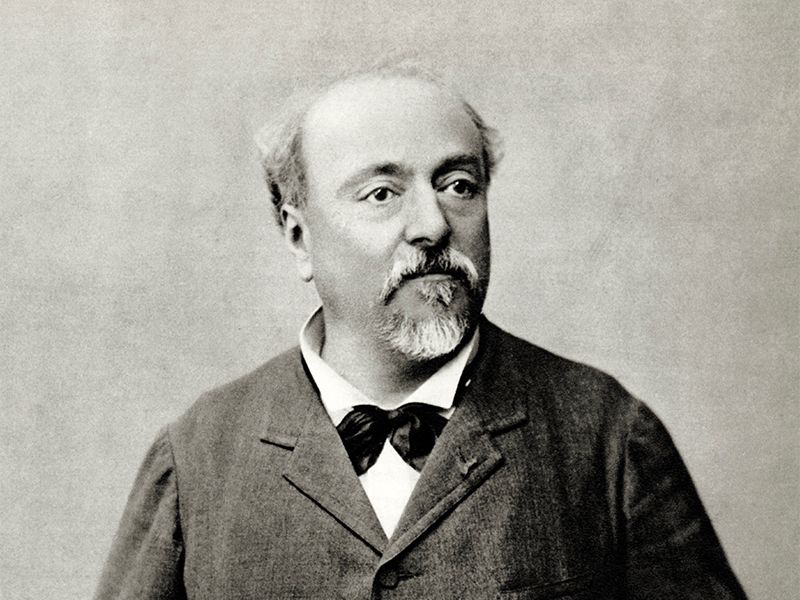
It’s an age-old conundrum. Follow your dream or listen to your parents? Chabrier’s parents fully disapproved of a music career, but when listening to his music it’s easy to understand why he finally packed in his approved job as a civil servant and became a full-time composer, at the grand old age of 39.
Born in Auvergne – folk tunes native to the area can be heard in many of his works – he became a naturalised Parisian, immersing himself in all things cultural in the bohemian capital, and was friends with not only fellow composers but leading writers and artists of the time.
As a composer he rattled off a decent-sized body of work in his 53 years (his life cut short by a disease caused by syphilis): for orchestra, piano and stage, as well as songs. Though popular during his lifetime he is mostly known now for two pieces, L’étoile and España, the latter inspired by folk music he heard on a visit to Spain, which garnered popularity across Europe (except, ironically, in Spain). His orchestrations are recognisable for their novelty, so much so that his use of percussion and brass in España was adopted by Igor Stravinsky in Petrushka, the final piece of today’s concert.


SHARE YOUR SNAPS
We love to see how you're enjoying the concert. Tag us in your photos and use the hashtag #LSOBMWClassics.
X (formerly Twitter) @londonsymphony
Instagram @londonsymphonyorchestra
Facebook @londonsymphonyorchestra
TikTok @londonsymphonyorchestra
Threads @londonsymphonyorchestra
LinkedIn london-symphony-orchestra
Johannes Brahms (orch Arnold Schoenberg)
Rondo alla zingarese
✒️1861 (orchestrated 1937) | ⏰8 minutes
Another work that originated on the piano, Rondo alla zingarese started life as the fourth and final movement of Johannes Brahms' Piano Quartet No 1, its passionate and virtuosic Hungarian character playing no small part for the work’s instant success. The term ‘alla zingarese’ or ‘in the Gypsy style’ (‘Gypsy’ referring to the indigenous Austro-Hungarian people of the time) was influenced by Brahms’ early tours with Hungarian violinist Eduard Reményi, and it proved an extremely popular choice with the listening public. It’s an evocative piece of music and would not be out of place accompanying silent movie capers!
Orchestrated, rather brilliantly, by Arnold Schoenberg in 1937, the colourful arrangement produces unexpected timbres (in particular from the percussion). There’s no rest for the Orchestra! This is a fiendishly tricky number, and a testament to the talent of the performers you hear and see on stage today.
Johannes Brahms
1833 (Germany) to 1897 (Austria)
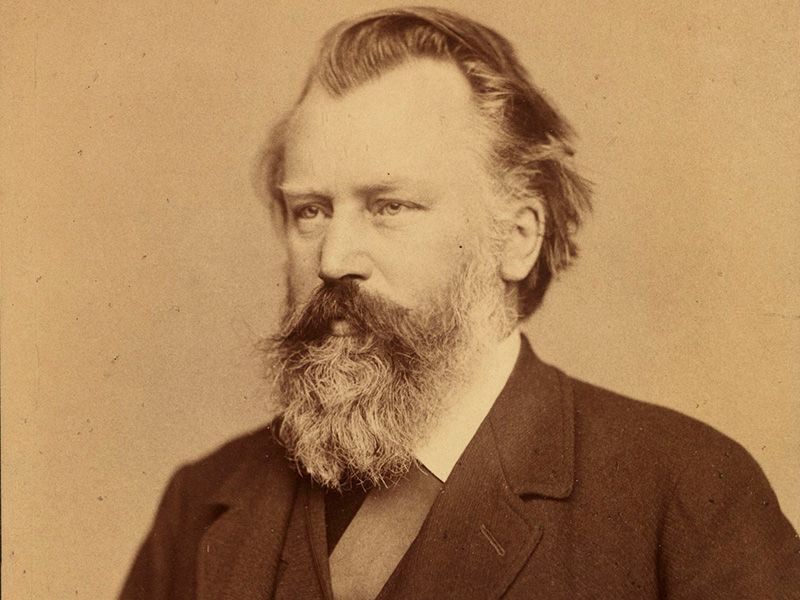
Brahms was to become one of the great composers standing proudly alongside those other ‘B’ behemoths of classical music, Ludwig van Beethoven and Johann Sebastian Bach. But he had reasons during his lifetime to think that this would never be the case. Although now hugely popular – his canon of works spread across many genres: he is particularly known for his symphonies, piano and choral works, and concertos – his peers, led by Richard Wagner and Franz Liszt, criticised him as being reactionary and old-fashioned. Not all agreed though. The younger Viennese composer Arnold Schoenberg was so impressed with Brahms' music that he orchestrated a number of his works, including the Piano Quartet No 1 heard today. This is perhaps surprising, as Schoenberg was to become a leading exponent of avant-garde 12-tone serialism.
Brahms’ talent bloomed early. He invented his own notation system by the time he was six, learned to play cello and French horn, and was so good at the piano that at the tender age of ten would perform (in less-than-salubrious dance halls) to help support his father’s income as an itinerant musician. The piano was a constant source of livelihood that helped him make his mark in later life. He spent some time accompanying the Hungarian violinist Eduard Reményi on tour, which gave him a taste for the flamboyant fiery Hungarian ‘Gypsy’ style that inspired so many of his Hungarian Dances, which were top hits of the day. Another virtuoso violinist and friend, Joseph Joachim, was the inspiration for other notable compositions, in particular the Violin Concerto, one of the most loved of the genre.
Brahms’ glittering career both on and off stage continued and, despite his intentions at 57 to give up the composing, he wrote until his death aged 66 of cancer, leaving behind a wonderful legacy enjoyed by so many.
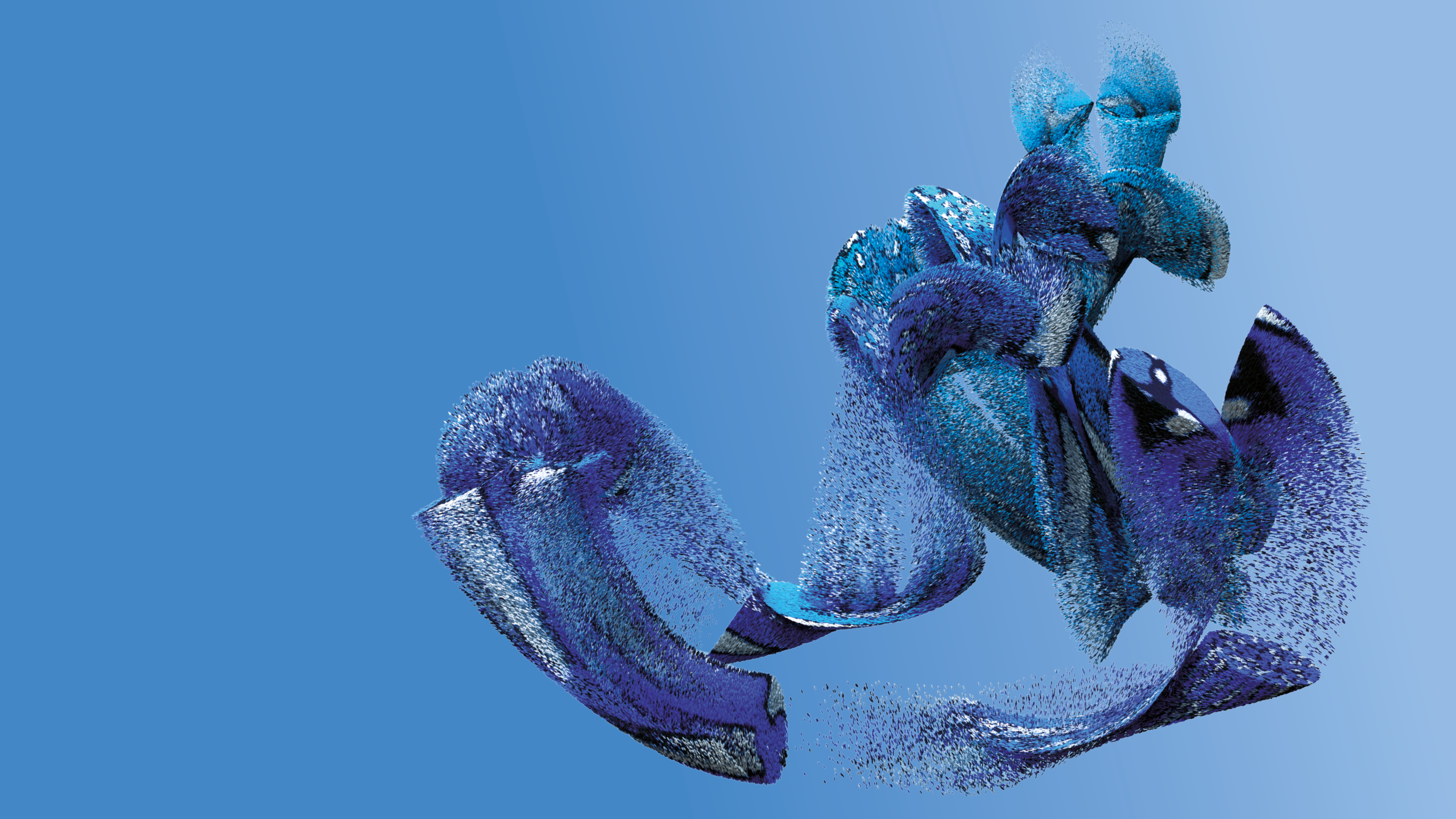
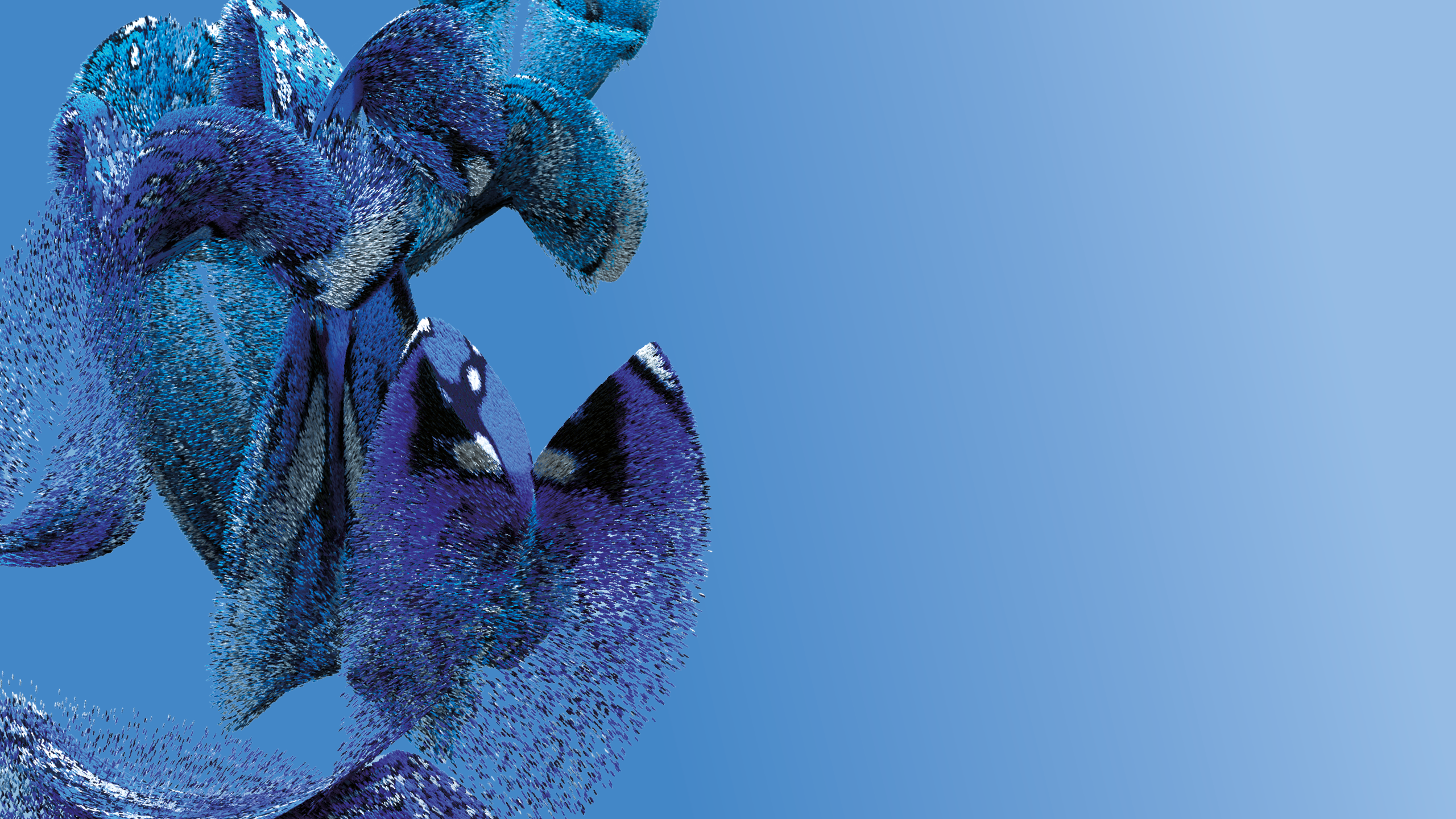
LISTEN TO OUR RECORD LABEL
The LSO has made over 150 recordings through our record label LSO Live, and featured on many more, including some classic film scores like Star Wars. You can find us on Apple Music Classical and Spotify.
Joanna Lee
beams.bellows.bounds
(world premiere)
✒️2024 | ⏰10 minutes
LSO Discovery Young Musicians
Guildhall School Musicians
Composer Joanna Lee introduces her latest work ...
beams.bellows.bounds is inspired by my time working nearby Trafalgar Square, when I would often sit in the Square and observe the dance-like nature of life, from morning to late. This includes the balletic beams of the sun, glistening down onto the Square in the still and quiet of the morning, bringing it to life and creating moments of beauty and others when shadows disrupt its warmth as it hides behind structures. As human life awakens, the stillness is interrupted by a burgeoning and somewhat menacing presence, as traffic comes to the fore, moving in cyclical motion and brash bellows. This motion is curtailed by reflective moments, where the sun beams down on protesters, whose presence grows in lines, heartedly reflecting on the challenges our present world faces. This sadness subsides as street performers and crowds of happy revellers unashamedly play and dance in exuberant bounds, proudly celebrating in the revelry and vibrancy of music.
Compositionally, the piece is pervaded by a very simple and recurring motif of a falling second on a quaver and crotchet pairing. beams.bellows.bounds is really about the young musicians playing the piece – composed to develop and explore their technique, it endeavours to offer them a variety of material and for us all to celebrate in their talent, our musical future, and the importance of music and musicians as a whole.
'[Taking part in the performance at Trafalgar Square has] made me want to pursue music and be able to perform in front of crowds like today. It's made me feel confident that I want to continue with music at a higher level.'
Joanna Lee
Described by The Guardian as 'a considerable talent', Joanna Lee’s works have been performed by the London Symphony Orchestra, English National Opera, BBC Singers, Opéra National de Paris, Birmingham Contemporary Music Group, BBC Proms, Orchestra of the Swan, London Music Masters, Royal Swedish Opera and the Aldeburgh Festival.
Joanna composed English National Opera’s first children’s opera, based on Oliver Jeffers’ The Way Back Home, and a second children’s opera on Jill Murphy’s Peace at Last, which toured to 70 theatres and schools. Her BBC Proms commissions include works for the BBC Singers and BCMG to mark Pierre Boulez’s 90th birthday, with recordings of her work by the London Symphony Orchestra and NMC, and a commission for Aldeburgh Music Club to celebrate 60 years since their founding by Benjamin Britten, and his Centenary.
Recent commissions include a set of songs for Britten Pears Arts’ Friday Afternoons project for nationwide use by primary schools, set to texts from The Boy Who Grew Dragons by Andy Shepherd, and a piece for the London Symphony Orchestra for their children’s concerts, based on The Lion Inside by Rachel Bright and Jim Field.
Joanna gained a PhD in composition from the Royal Birmingham Conservatoire, tutored by Oliver Knussen, Richard Causton, Edwin Roxburgh and Joe Cutler, and was awarded Honorary Membership for outstanding achievement. Joanna is an experienced music educator and has worked as composer assistant to Paul Englishby, including music for an Oscar-nominated film and projects at the Royal Shakespeare Company, Abbey Road Studios, Ronnie Scott’s and The Royal Ballet.


WATCH MORE ONLINE
There are almost 1,000 videos on the LSO's YouTube channel, from performances to interviews and masterclasses, with new videos released regularly.
Igor Stravinsky
Petrushka (1947 version)
✒️1910-11, revised 1947 | ⏰35 minutes
In 1910, and still a young man in his 20s, Stravinsky was basking in the adoration of bohemian Paris glitterati. After the success of The Firebird with Diaghilev’s Ballets Russes, it made sense to cement the winning formula with a follow-up production. His what-was-to-be provocative The Rite of Spring was brewing, but Stravinsky got side-tracked by a piece for piano and orchestra. Yet again, another work that started life on the piano! This instrument, Stravinsky felt, represented a puppet! Soon Petrushka emerged fully-formed – perfect for a ballet, the music just naturally evokes images of dancers.
You will notice that the music is very different to that of Chabrier or Brahms. Even though Stravinsky employs Russian folk songs throughout the piece, he uses a different tonality and complex rhythms that perplexed the orchestral players and confounded the dancers of the original 1911 production. Nevertheless, Petrushka became extremely popular throughout Europe and even into the United States, cementing Stravinsky’s fame.
The work is presented in four scenes:
Scene 1: The Shrovetide Fair
We begin in a bustling square in St Petersburg. Excited crowds are enjoying the holiday (Shrovetide is Shrove Tuesday, or Pancake Day). The busy tunes we hear are based on Russian street hawkers’ cries (a little like the ‘Who will buy’ scene from the musical Oliver!). In the background a puppet theatre stands – similar to seaside Punch and Judy ones we see in the UK. With a drumroll, attention is drawn to a Magician who, with a wave of his wand, reveals three puppets who begin to dance: the swashbuckling Moor, the Ballerina, beautiful and graceful, and the lumbering and awkward Petrushka. It’s clear he loves the Ballerina but she only has eyes for the Moor. The magician brings the show to an abrupt end.
Scene 2: Petrushka’s Room
Petrushka is cruelly booted into his room: he broods on his misfortunes – here the piano takes centre stage. The Ballerina appears but quickly leaves after Petrushka awkwardly attempts to dance with her. Petrushka’s frustration is heard on frenzied strings and the ‘Petrushka Chord’, made up of notes that sound very dissonant, which gives a suggestion of underlying violence.
Scene 3: The Moor’s Room
Menacing declarations on the brass reveal the Moor in his opulent room. A seductive tune is heard on the cor anglais (the oboe’s big sister). The Ballerina tries to impress him and plays a bright tune on her toy trumpet. Petrushka finds them in a languorous waltz played on flutes, and in a jealous rage Petrushka attacks the Moor who chases him out of the room.
Scene 4: The Shrovetide Fair – Evening
With another drum roll we are back in the Square. It is early evening, and the party is in full swing with a performing bear (listen out for growls on the brass), dancing girls, posturing stable boys and actors dressed in devils’ masks. They are interrupted by Petrushka chased by the Moor brandishing his scimitar. With a fatal swipe he murders the hapless puppet. The crowd are aghast but the Magician shows that he is simply a puppet – and they go about their business. The outcome, as Stravinsky himself wrote, 'is a terrific noise which reaches its climax and ends in the sorrowful and querulous collapse of the poor puppet.' A lone muted trumpet is heard: the ghost of Petrushka thumbs his nose at the Magician who runs away in terror.
Igor Stravinsky
1882 (Russia) to 1971 (United States)
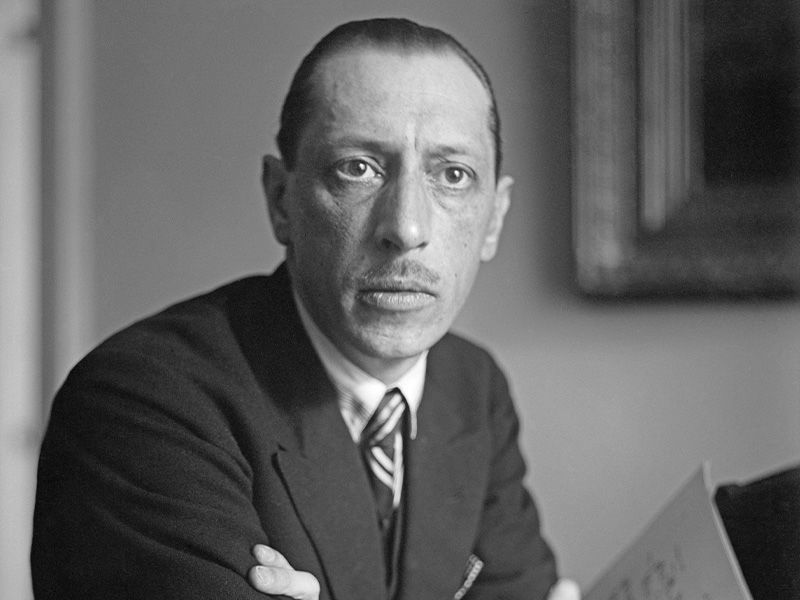
To say that Russian Igor Stravinsky witnessed a lot of changes in his 88 years would be no exaggeration. He lived through tumultuous times and, similarly, he instigated changes and shook up the music world, his musical innovations building a foundation for much of 20th- and 21st-century music. Throughout his long career, Stravinsky used numerous compositional techniques.
Born into a musical family, his father was an opera singer and his mother a talented pianist, but they weren’t keen on beloved Igor having a career in music. To appease them he studied law (rather unenthusiastically), but his first love was too much of a pull. As soon as he could he became an apprentice to Rimsky-Korsakov. After his first flicker of fame with Fireworks, his name and notoriety was firmly cemented with his alliance with the Ballets Russes, which culminated in three of his most well-known works including The Rite of Spring, which infamously caused a riot at its first performance because of its shocking novelty.
From then on there was no stopping him, not even World War I, when he fled to Switzerland with his wife and four children. Here his homesickness influenced his music, infused as it was with Russian folk-music, and later the dazzling world of jazz started to rear its head. He spent 20 years in France where he continued to build his name.
Tragedy struck at the end of the 1930s when he lost his wife and daughter to tuberculosis. A devastated Stravinsky emigrated one final time, to the US in 1939, where the self-confessed ‘inventor of music’ continued to be true to his word and compose works that amazed, shocked and inspired audiences and musicians alike.

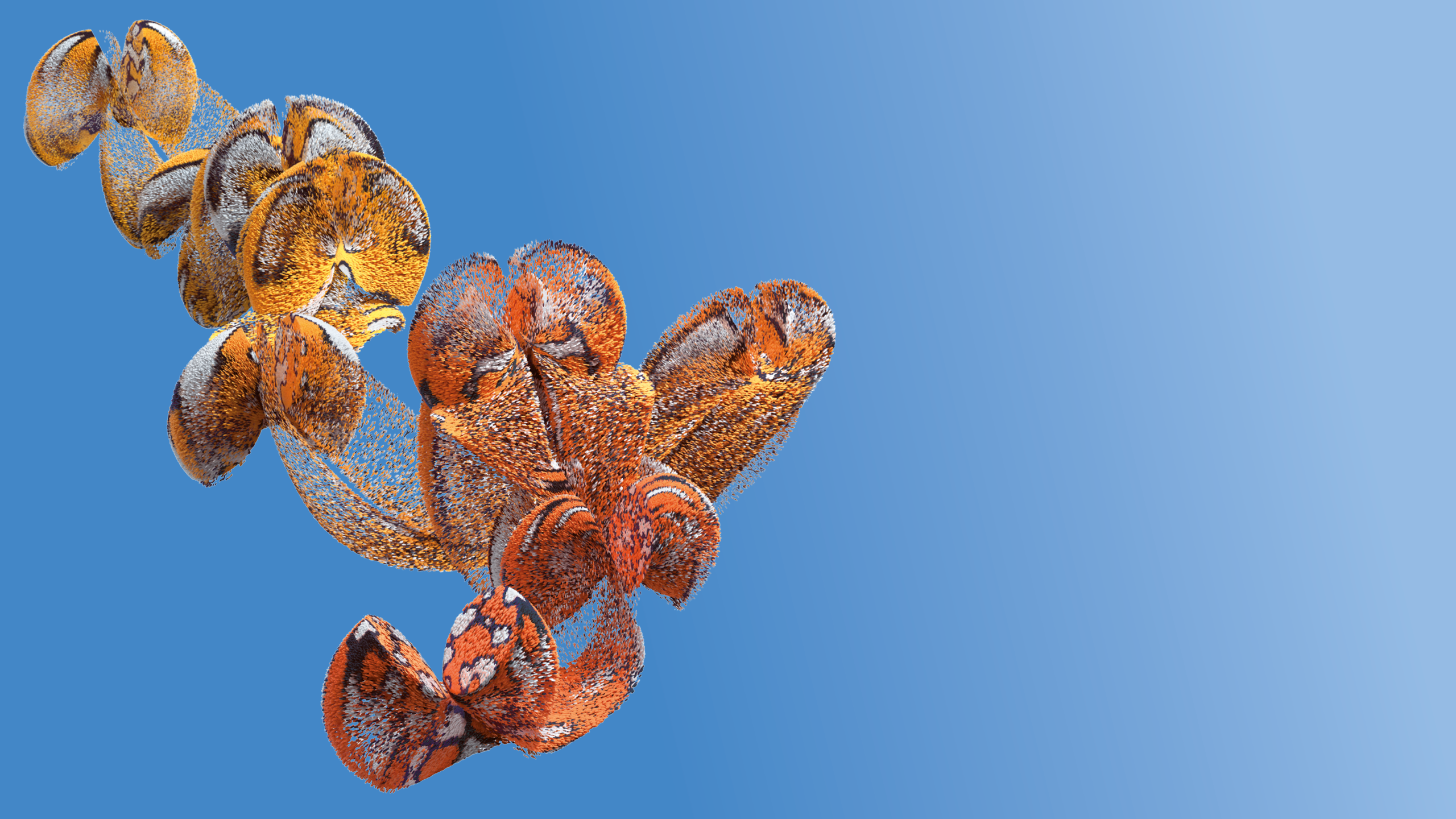
Duncan Ward
Conductor
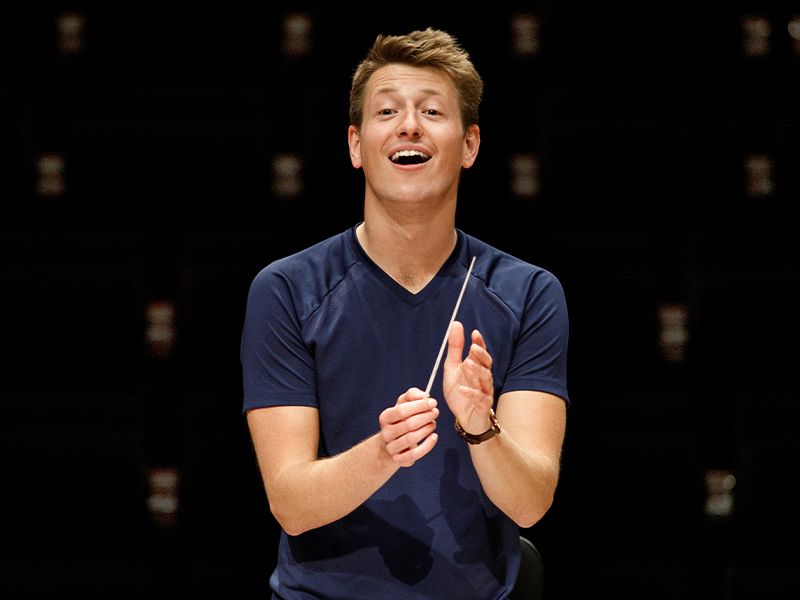
Duncan Ward © Alan Kerr
British conductor Duncan Ward has established himself as an exciting and versatile conductor. He is Chief Conductor of Philzuid (South Netherlands Philharmonic).
The 2023/24 season saw Duncan return to the LSO for two highly acclaimed projects at the Barbican, with Abel Selaocoe and Isabelle Faust as soloists. Recent symphonic highlights include with the Bavarian Radio Symphony Orchestra, Finnish Radio Symphony, Dresden Philharmonic, Les Siècles, Lucerne Symphony and Kammerakademie Potsdam. Duncan made his debut at Zurich Opera with Midsummer Night’s Dream, as well as returning to Cologne Opera for Peter Grimes, and in 2022 made his North American debut at the Metropolitan Opera in 2022 with The Magic Flute.
Duncan returns to London later this year to conduct a new production of Britten’s Turn of the Screw at English National Opera. In 2024/25 he also debuts at Opera National de Lyon (Cosi fan Tutte) and Stuttgart Staatsoper (Death in Venice), Berlin Radio Symphony Orchestra, Osaka Philharmonic, Orchestre Symphonique du Quebec and Schleswig-Holstein Festival Orchestra.
Committed to several music charity projects, in his late teens Duncan co-founded the WAM Foundation, enabling young British musicians to teach in schools across India. He has also regularly collaborated with the South African non-profit organisation MIAGI, for whom he directed a major tour in 2018 to celebrate the hundredth anniversary of Nelson Mandela’s birth. Through his work across India, Duncan had the rare privilege to be personally invited to study Indian classical music with the late sitarist Ravi Shankar.

Duncan Ward © Alan Kerr
Duncan Ward © Alan Kerr
COME AND SEE US AGAIN
The LSO's home is at the Barbican in the City of London, and has been since 1982. We perform concerts there almost every week from September to June, with Wildcard tickets starting at just £12. Bag a seat at a discount price, and find out exactly where when you get to the concert.
LSO Discovery Young Musicians
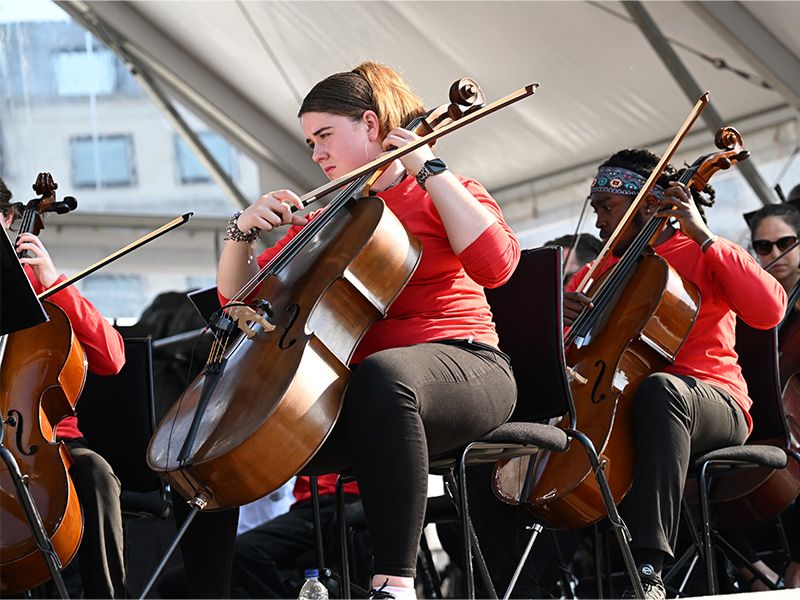
LSO On Track at BMW Classics © Doug Peters
On stage today, the young musicians represent all ten LSO On Track partner Music Education Hubs, as well as Guildhall Artist Masters Students on the Orchestral Artistry programme, and members of the LSO Pathways programme and the LSO Conservatoire Scholarships programmes.
LSO On Track is a partnership between the LSO and ten East London Music Services. This partnership puts the LSO at the heart of the Music Education Hubs in East London, in the boroughs of Barking & Dagenham, Bexley, Greenwich, Hackney, Havering, Lewisham, Newham, Redbridge, Tower Hamlets and Waltham Forest. The programme is developed collaboratively between partners, providing a diverse programme of activity for young people which responds to changing need in the community and complements the local offer.
LSO On Track has a key objective of creating environments for young people to flourish, both musically and personally – wherever they started from musically, socially, economically and culturally. Like an orchestra, LSO On Track aims to build communities made up of people and organisations, greater than the sum of their parts. It provides a diverse programme which reflects the variety of individuals who make up the communities of East London, which bring together the skills and expertise of many individuals. The programme includes the East London Academy, today on stage, as well as activities for primary school teachers and their pupils, for special schools and young people with learning disabilities, for young musicians to both devise their own new music and receive high-level coaching from LSO musicians, plus opportunities to perform in world-class venues, and much more.
LSO Pathways is a two-year programme of support and activity designed for emerging orchestral musicians, who face barriers which may have hindered their progress and development. Participants take part in three residential weekends in London each year. All expenses are covered by the LSO. The residential weekends are designed around LSO activity taking place at that time, with opportunities to attend rehearsals and concerts. Training is provided in areas of orchestral life including education work, creative opportunities, audition workshops and career guidance. Alongside group activities, the aim is to offer a bespoke experience to each participant focusing on their own musical development. Each participant is matched with a mentor from the LSO, who carefully nurtures their personal and professional development over the two years.
The LSO Conservatoire Scholarships programme is a ground-breaking initiative that aims to ensure that musicians from all backgrounds have access to conservatoire training and reduce barriers to entering the profession.
Such barriers include high tuition and maintenance costs. These Scholarships of £15,000 per academic year allow recipients to focus fully on their studies during a critical time in their education, whilst benefiting from additional support and mentoring from the LSO’s own renowned musicians.
Guildhall School Musicians
The LSO works in close collaboration with Guildhall School of Music & Drama to deliver the Orchestral Artistry programme, an exciting professional specialism for advanced strings, wind, brass or percussion instrumentalists seeking a career in orchestral playing, as part of the Guildhall Artist Masters MMus/MPerf in Performance.
Students take part in orchestral repertoire training, audition preparation and coaching sessions with LSO players, as well as LSO rehearsal sit-ins, masterclasses and community projects.

LSO On Track at BMW Classics © Doug Peters
LSO On Track at BMW Classics © Doug Peters
LSO Discovery Young Musicians On Stage
First Violins
Chloe Merlin †
Natalie Ferreira †
David Gherman
Jennifer Smith
Destiny Oveto
Anisa Jeler
Chloe Zuiderwijk
Second Violins
Matteo Ishac-Araya
Sofia Harris Tafri
Madeleine Arnold
Shamayam Hogan
Olivia McCollin
Emma Wong
Violas
Shahriar Meah
Jedidiah Thwala
Angelo McFarlane-Green
Ajmain Alam
Jasmine Neguib
Cellos
Nosheen Chowdhury
Iyannah Laville
Dorrinda Kitaka
Noah Martin
Beatrice Affleck
Double Basses
Yannis Sissuh
Joel Elonge
Hadessah Nanjo * †
Flutes
Anya Cookson *
Brigita Bernotaviciute
Mayukhjit Chakraborty
Oboes
Aoife O’Mahony
Daniel Sedlacek
Oluwatobi Aroyewun
Clarinets
Samuel Gratton
Sophia Nallalingham
Zana Barnes
Ivan Rogachev ‡
Bassoons
Eleanor Higgins
David Kimaro
Finn Malcom-Norris
Horns
Alice Jarrett
Mim Asker
Georgie Spray *
Trumpets
Laurence Smith
Leelavathi Assi
Samuel Bryant
Trombone
Edward Fields
Zahra Thaha
Tuba
Jeshurun Nanjo
Percussion
Toby Carpenter
Emil Alandry-Kåri
Daisy Davis *
* Member of LSO Pathways
† East London Academy Alumni
‡ LSO Conservatoire Scholar
Guildhall School Musicians On Stage
First Violins
Zoe Hodi *
Pak Ho Hong *
Ivelina Ivanova
Second Violins
Paula Guerra
Tanya Perez Jovetic
Benedict Wong
Violas
Kelvin Chan *
Youngtwo Cheung *
Holly Woods
Cello
Eryna Kisumba *
Double Bass
Gabriel Maciel Rodrigues *
Flute
Isabelle Harris *
Oboe
Charis Lai *
Bassoon
Amelia Cody-Byfield *
Horn
Isabella Ward Ackland *
Trumpet
Noah Bailis *
Trombone
Felix Rockhill *
* Member of Orchestral Artistry, part of the Guildhall Artist Masters programme
London Symphony Orchestra
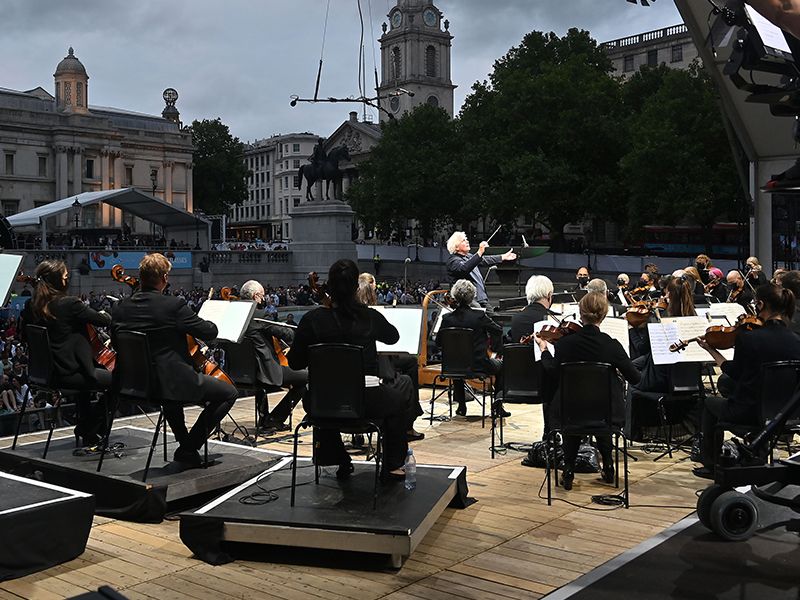
BMW Classics 2021 © Mark Allan
The London Symphony Orchestra strives to inspire hearts and minds through world-leading music-making. We were established in 1904, as one of the first orchestras shaped by its musicians. Today, we're ranked among the world's top orchestras. We are Resident Orchestra at the Barbican, and we reach international audiences through touring, online broadcasts and streaming services.
Through our world-leading learning and community programme, LSO Discovery, we’re connecting people of all ages and walks of life to the power of great music. In 1999, we formed our own recording label, LSO Live, and revolutionised how live orchestral music is recorded, with over 150 recordings released so far.
Through inspiring music, educational programmes and technological innovations, our reach extends far beyond the concert hall.

BMW Classics 2021 © Mark Allan
BMW Classics 2021 © Mark Allan
On Stage
Leader
Andrej Power *
First Violins
Rebecca Chan
Clare Duckworth *
Stefano Mengoli
Laura Dixon
Maxine Kwok *
Claire Parfitt
Elizabeth Pigram *
Laurent Quénelle
Sylvain Vasseur
Morane Cohen-Lamberger
Caroline Frenkel
Grace Lee
Erzsebet Racz
Second Violins
Julián Gil Rodríguez *
Sarah Quinn
Miya Väisänen *
Naoko Keatley
Belinda McFarlane *
Csilla Pogány
Paul Robson
Louise Shackelton
Helena Buckie
Ingrid Button
Izzy Howard
Jan Regulski
Violas
Eivind Ringstad *
Gillianne Haddow
Anna Bastow
Germán Clavijo
Julia O'Riordan
Sofia Silva Sousa
Robert Turner *
Mizuho Ueyama
Regina Beukes
May Dolan
Cellos
David Cohen *
Alastair Blayden
Ève-Marie Caravassilis
Daniel Gardner *
Henry Hargreaves
Silvestrs Kalnins
Miwa Rosso
Peteris Sokolovskis
Double Basses
Rodrigo Moro Martín *
Patrick Laurence
Thomas Goodman *
Simon Oliver
Colin Paris
Evangeline Tang
Flutes
Gareth Davies
Imogen Royce
Piccolo
Sharon Williams *
Oboes
Olivier Stankiewicz
Rosie Jenkins *
Cor Anglais
Drake Gritton
Clarinets
Sérgio Pires
Lucia Porcedda *
Bass Clarinet
Ferran Garcerà Perelló
Bassoons
Rachel Gough
Joost Bosdijk *
Lorna West
Contra Bassoon
Martin Field
Horns
Diego Incertis Sánchez *
Jonathan Maloney *
Daniel Curzon
Brendan Thomas
Amadea Dazeley-Gaist
Trumpets
James Fountain
David Geoghegan
Aaron Akugbo
Adam Wright *
Trombones
Isobel Daws
Andrew Cole
Bass Trombone
Paul Milner *
Tuba
Ben Thomson *
Timpani
Nigel Thomas *
Percussion
Neil Percy
Sam Walton *
Oliver Yates
Matthew Farthing
Rachel Gledhill
Harps
Lucy Wakeford
Fiona Clifton-Welker
Piano
Joseph Havlat
Celeste
John Reid
* On stage in beams.bellows.bounds
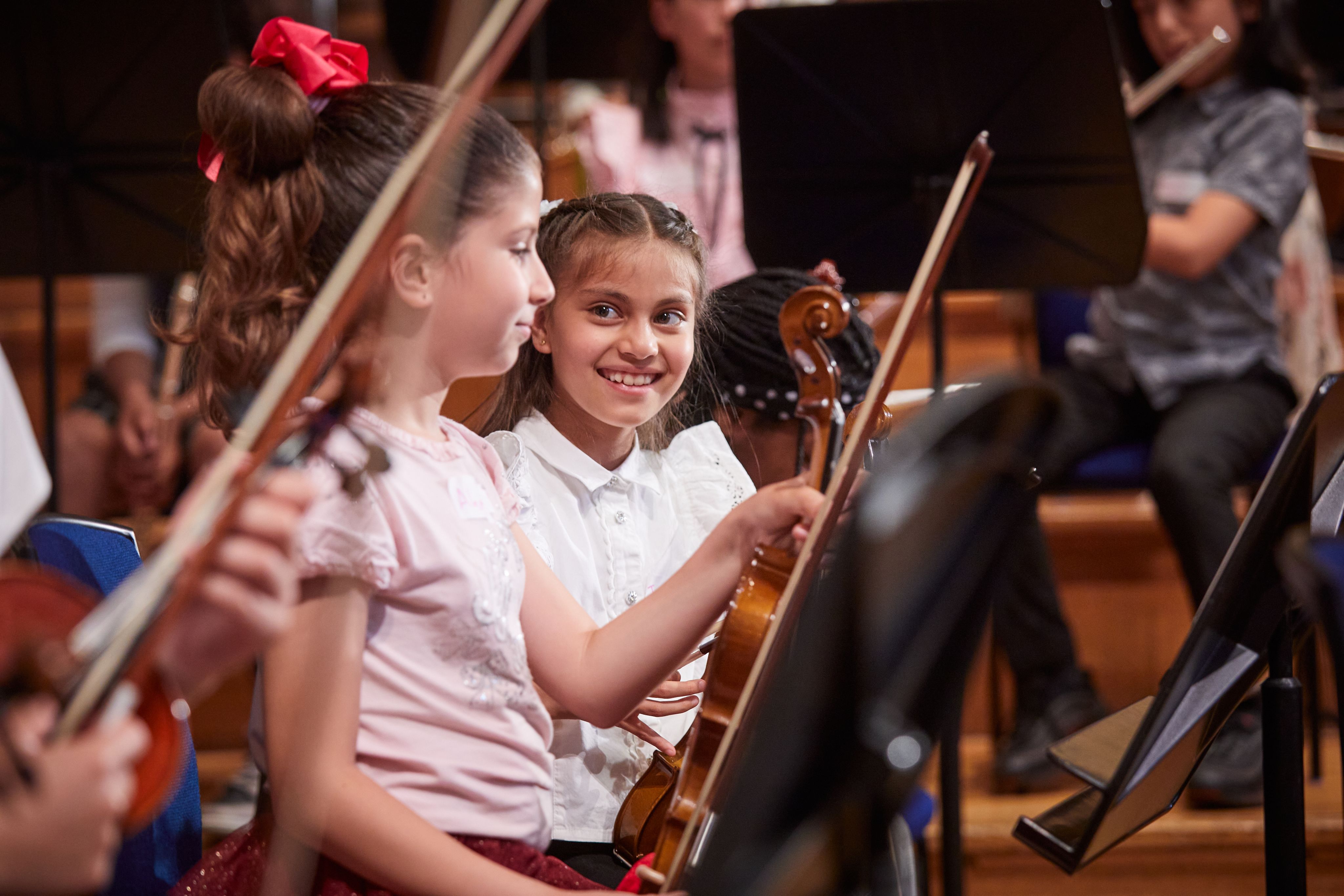
London Music Fund
Developing Potential since 2011

The London Music Fund’s mission is to transform under-served communities by enabling children to access high-quality music education.
Click to learn more and help us change young lives through music.
We hope you enjoyed BMW Classics 2024.
If you joined us in Trafalgar Square, thank you for coming and have a safe journey home. To everyone who watched online, thank you for letting us bring music into your homes. See you next year!
TELL US WHAT YOU THOUGHT
We'd love to hear about your BMW Classics experience. Let us know what you thought of the concert by filling out this short survey.

The LSO is funded by Arts Council England in partnership with the City of London Corporation, which also provides the Orchestra’s permanent home at the Barbican.
